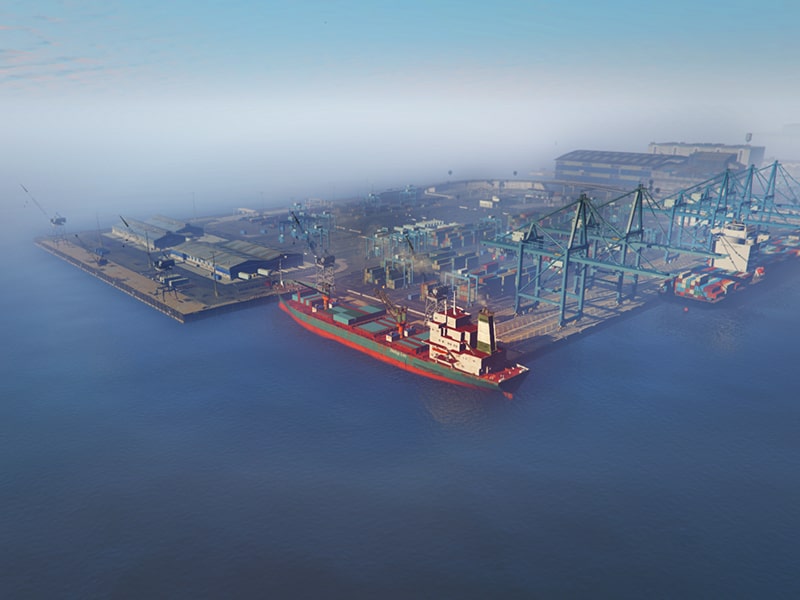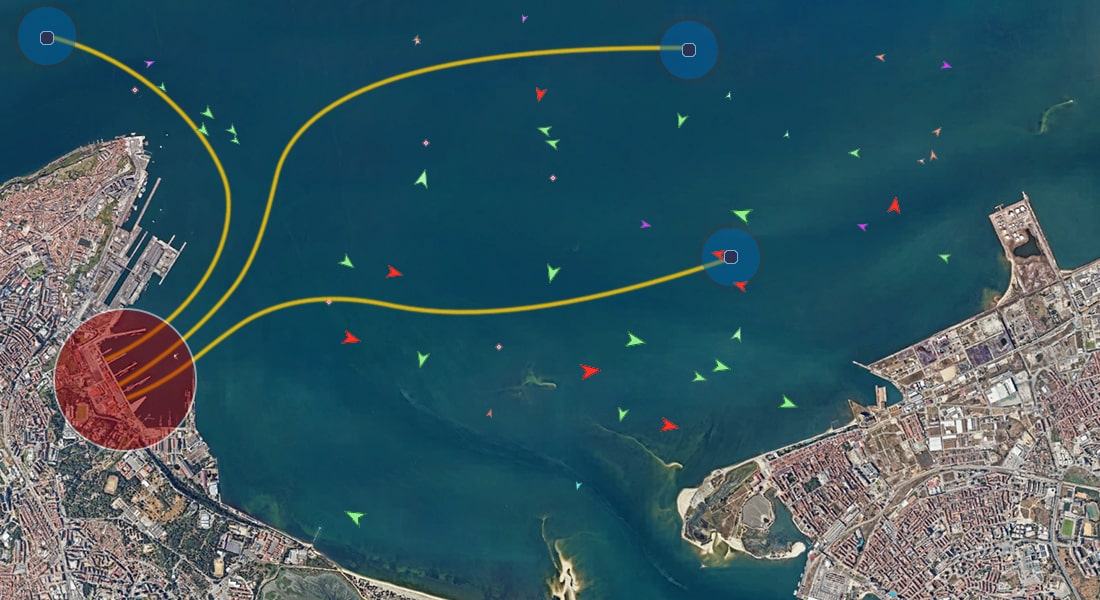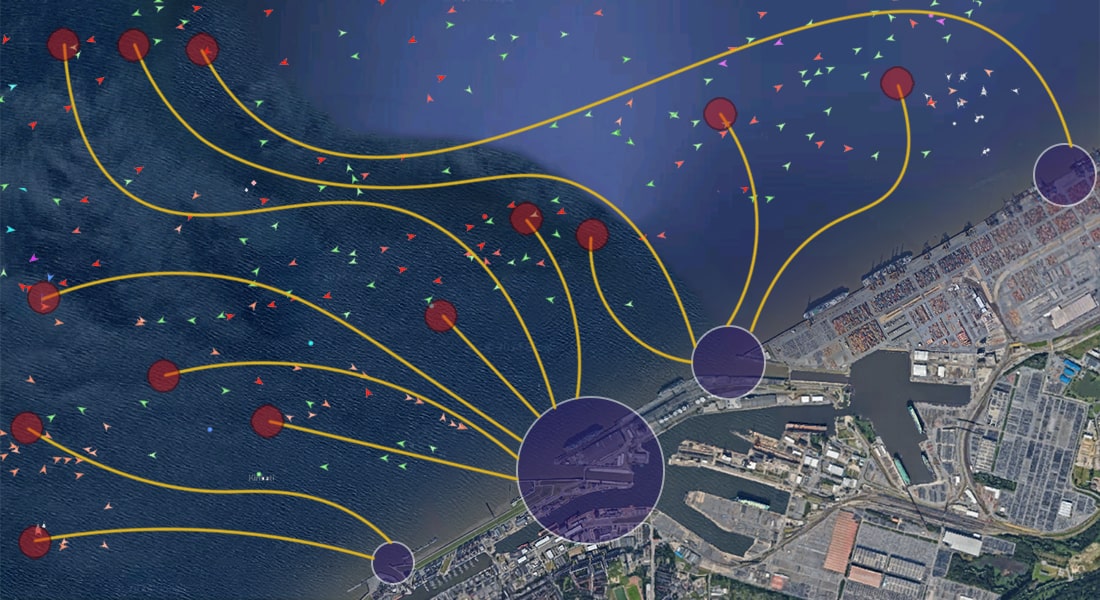
The berth scheduling problem involves the allocation of vessels to berths within a marine terminal, with the aim of optimizing operational efficiency by either maximizing ocean carriers' satisfaction, typically by minimizing vessel delays, or minimizing the costs incurred by terminal operators. This problem is subject to various assumptions. For example, all vessels requiring service may already be present in the port prior to the start of the planning period, or they may be scheduled to arrive during the planning period. In the latter scenario, each vessel's estimated time of arrival is dependent on several factors, including its departure time from the previous port, the average operating speed, and the distance between the ports. Recent increases in fuel costs have prompted ocean carriers to reduce vessel operating speeds, while simultaneously pressuring terminal operators to uphold scheduling reliability. Moreover, collaborative initiatives between industry stakeholders and governmental agencies have been proposed to reduce emissions from both marine vessels and port operations.
Congestion in container terminals, intensified competition among terminals, the growing importance of time in liner shipping, and pressure from shipping operators to enhance service efficiency and punctuality (including berthing and vessel handling operations) highlight the need for optimization of seaside operations in container terminals. Terminal operators aim to solve the berth scheduling problem (BSP), which involves assigning vessels to berths in a manner that minimizes vessel turnaround time, maximizes port throughput, and maintains customer satisfaction at an acceptable level. Customer satisfaction is often influenced by contractual agreements, wherein terminal operators may offer differentiated services to customers handling high container volumes or frequent vessel calls at the port.
Cost is a critical factor for ocean carriers and plays a central role in the formulation of berth schedules. Notably, ocean carriers have reported that fuel expenses now constitute over 60% of total operating costs, prompting them to implement significant measures, including reducing ship speeds from 25 knots to more economically efficient speeds of 20 knots. In addition, ocean carriers emphasize the importance of maintaining schedule integrity, not only for operational efficiency but also for its environmental benefits. As a result, many CEOs and senior executives have opted to reduce vessel speeds across several routes and advocate for shorter waiting and handling times at terminals, identifying fuel consumption as one of their most significant operational challenges in recent years.
Beyond the profit concerns of carriers, the rapid increase in container freight volumes has intensified the need to develop and implement emission reduction and mitigation strategies. In certain regions, large container terminals have been identified as significant contributors to air pollution. The diesel engines that power most port activities, including container vessels, serve as concentrated emission sources, often situated near densely populated urban areas already impacted by pollution from other diesel-powered vehicles. While trucks are recognized as the primary source of emissions within container terminals, container vessels also contribute significantly, with emissions from vessel hoteling accounting for a substantial portion of total port emissions. In response, various collaborative initiatives between industry stakeholders and government agencies have been proposed, focusing primarily on reducing emissions through the adoption of alternative fuel sources for vessels during their stay in port.
Classification of BSP
In the berth scheduling problem, vessels arrive over time at a port and the terminal operator assigns them to berths for unloading and loading of containers based on several factors and considerations. Three broad classification schemes of the BSP may be specified.
- The discrete versus continuous berthing space
- The static versus dynamic vessel arrivals
- The static versus dynamic vessel handling time
The discrete problem considers the quay as a finite set of berths. In the continuous problem vessels can berth anywhere along the quay. In the static arrival problem, all the vessels to be served are already in the port, while in the dynamic arrival problem, adopted in the majority of the literature, not all vessels to be scheduled for berthing have arrived at the time scheduling begins, although estimated arrival times are known in advance and are used in the models. Finally, in the static handling time problem the vessel handling time is considered to be known, whereas in the dynamic it is a variable. Defining the best berth scheduling policy for each port operator depends on several factors, including the type and function of the port (common user or dedicated facility, transshipment hub and so on), size, location, nearby competition, types of contractual agreements with the ocean carriers. All these factors have different effects on the desired objective, which could be the customer level of service (for example delayed departure) and/or the environmental effects of the vessel while at the port (for example emissions). Several berth scheduling policies and related factors have been explored in academic research but, to date, environmental considerations have not been included in BSP formulations.

Problem Formulation
In light of these issues, the development of berth-scheduling policy to minimize vessel delayed departures and indirectly reduce fuel consumption and emissions produced by the vessels while in idle mode has become crucial in recent years. In these types of problems, vessel arrival times are usually considered as a variable and are optimized to accommodate the objectives of the proposed policy while providing ocean carriers with an optimized vessel speed. An efficient algorithm based on real data should be able to reduce the amount of emission produced by vessels at the port in idle mode, optimize fuel consumption and waiting time at the port by reducing vessel operating speeds to optimal levels and minimize the effects of late arrivals to the ocean carriers schedule.
As for the codifying process of BSP, it can be assumed that the quay is divided into a number of berths and each berth can service one vessel at a time regardless of vessel size. Moreover, it can be assumed that vessel handling time is proportional to vessel capacity, depending also on the assigned berth. Once a vessel is berthed, it will remain in its location until all cargo-handling operations are completed. The following notations are generally used in BSP solutions:
Sets
- Set of berths
- Set of vessels
- Set of service orders
Parameters
- Time when berth becomes idle for the first time in the planning horizon
- Handling time of vessels
- Earliest arrival time of vessels (Arrival time lower bound)
- Latest arrival time of vessels (Arrival time upper bound)
- Departure time request of vessels
- Amount of emission produced hourly by vessels in idle mode
Decision variables
- Idle time of berth between start of service of vessels and the departure of its immediate predecessor
- Waiting time of vessels served at berths
- Arrival time of vessels
- Departure delay of vessels served at berths
Objectives
- The total waiting and delayed departure time for all vessels
- The total delayed departure time for all vessels
Constraints
- Ensuring that vessels must be served once
- Ensuring that each berth services one vessel at a time
- Ensuring that each vessel is served after its arrival
- Ensuring that the estimated delay of the departure of each vessel is within the allowable range
- Ensuring that the estimated waiting time of each vessel is within the allowable range

Due to the complexity of the formulation, it is unlikely that the problem can be solved by commercial mathematical programming solvers. Results from various research have shown that the use of exact optimization tools is computationally time-consuming and requires several hours to define optimal berth schedules, even in simple berth scheduling policies (that is minimization of total service time), because of the large-scale model that has to be built to describe a real case example. To overcome this challenge, effective AI approaches need to be developed based on the state-of-the-art techniques for both optimization and estimation.
Challenges
When using AI for estimation and prediction of vessel arrival times, several key challenges arise, which often depend on the nature of the data, the task, and the AI models used. One of the most prominent challenges is dealing with the quality and quantity of data. AI models depend heavily on data, but in BSP scenarios, data is often incomplete, noisy, or even missing. Incomplete datasets, which are mainly based on AIS data, may fail to capture essential patterns, while noisy data can obscure the true relationships between variables. Additionally, small datasets can lead to overfitting, where the model becomes overly specific to the training data, learning details that may not generalize to new, unseen cases.
Another challenge arises from the need to ensure that models generalize well. Overfitting is a common issue where models perform well on training data but fail when applied to new datasets. This happens when models learn irrelevant features or noise rather than the true underlying patterns. On the other hand, underfitting, where models are too simplistic to capture the complexity of the data, leads to poor predictive performance. An added complexity is the potential for a domain shift, where the data distribution in the real-world environment differs from that used during training, causing a drop in model accuracy.
In terms of optimization on the other hand, a range of significant challenges arise, rooted in both the complexity of the optimization process and the practical constraints of BSP. One challenge involves the high dimensionality of many BSP scenarios. As the number of variables grows, the search space expands exponentially, a phenomenon known as the curse of dimensionality. In these cases, traditional optimization techniques may become inefficient, as the vastness of the search space makes it difficult to locate optimal solutions without incurring significant computational costs. This issue becomes even more problematic in combinatorial optimization, where the possible configurations of variables can quickly outnumber feasible computational resources, making exhaustive search methods impractical.
A critical problem that often arises in optimization is the distinction between local and global optima. Many AI optimization algorithms, such as gradient descent, are prone to getting stuck in local optima, especially in complex, non-convex problems with rugged solution landscapes. This makes finding the true global optimum difficult, particularly when the search space is filled with numerous local minima or maxima. Techniques such as simulated annealing or genetic algorithms are often employed to address this, but they require careful tuning and may still fall short of guaranteeing global optimality, especially in highly complex environments.
In summary, the challenges in using AI for both estimation and optimization are numerous and multifaceted. They include difficulties in defining clear objectives, handling high-dimensional search spaces, navigating the trade-offs between local and global optima, managing constraints, adapting to dynamic and stochastic environments, balancing exploration and exploitation, and ensuring scalability and fairness. These challenges require careful algorithm selection, data management, and continuous adaptation to real-world conditions in order to achieve effective and reliable optimization outcomes.
References
-
Optimizing container terminal operations: a systematic review of operations research applications
Weerasinghe, Buddhi A., H. Niles Perera, and Xiwen Bai.
Maritime Economics & Logistics (2024)
-
A comprehensive bibliometric analysis and assessment of high-impact research on the berth allocation problem
Dragović B, Zrnić N, Dragović A, Tzannatos E, Dulebenets MA.
Ocean Engineering (2024)
-
Predicting vessel service time: A data-driven approach
Yan R, Chu Z, Wu L, Wang S.
Advanced Engineering Informatics (2024)
-
Vessel turnaround time prediction: A machine learning approach
Chu, Zhong, Ran Yan, and Shuaian Wang.
Ocean & Coastal Management (2024)
-
Integrated operation models with quay crane maintenance in a container terminal
Wang T, Gao G, Wang K, Shi J.
Ocean & Coastal Management (2024)



